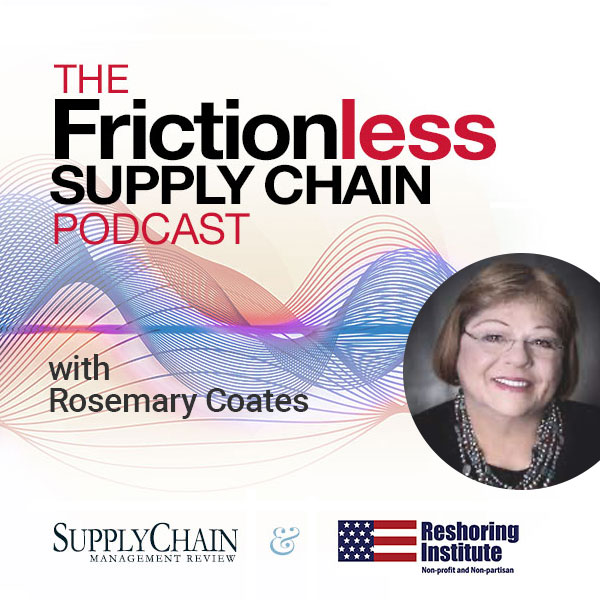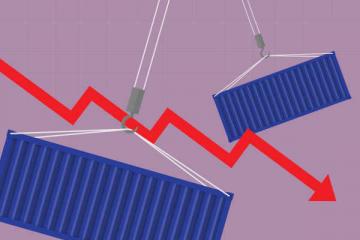Sorry, but your login has failed. Please recheck your login information and resubmit. If your subscription has expired, renew here.
May-June 2020
Most of the time, when I sit down to write this column I look at what I wrote for the previous year’s issue for perspective or inspiration. The truth is, nothing I’ve written before, or experienced in my 64 years, has prepared me for COVID-19. I’m sure that most, if not all, of you can say the same. Yes, it’s a global crisis, but closer to home, it’s a supply chain crisis. Quite simply, even the best supply chains, at least those that are still operating, are broken. Browse this issue archive.Need Help? Contact customer service 847-559-7581 More options
Editor’s note: This is the first part of a two-part series on the recession and supply chains.
The crash of 2008 is just a memory. The layoffs, bankruptcies, foreclosures and bailouts of 2008 through 2013 have faded away. Good times are rolling again. Employment is near a record high, businesses are expanding and the stock market is at record highs. What’s not to like?
Given all of the economic exuberance, we might sound a little like a voice crying in the wilderness, but someone needs to ask the question: How long will it last?
Consider this: A senior manager in his or her 60s has seen stock market crashes in 1962, 1974, 1981, 1987, 2002, and 2008. Before the crash of 2008, the average drop in the stock market for these crashes was 29% (range of 22% to 35%) and the average time to recover their value was 18 months (range 14 months to 23 months).
Stock markets signal the beginning of a recession but not the end. The employment rate begins falling and keeps falling for a year or more after the markets are already recovering nicely. The employment rate is a better signal for the end of a downturn and it usually takes twice as long as the stock market to recover.
The crash of 2008 and the recession that followed were much worse than normal for this era. The Dow Jones Industrial Average fell 53% from 14,093 to 6,600 and did not regain its former value for 5 1/3 years. The unemployment rate rose from 4.4% to a peak of 10% one year after the market crash.
It took employment another nine years to return to pre-crash levels. During the recession 7.9 million people in the United States lost their jobs, 6 million homes went into foreclosure and 4 million businesses closed. We have now enjoyed 10 years of recovery from this latest crash and recession.
The U.S. stock market has shot past its pre-crash level of 14,093 and soared to a range of 25,000 to 27,000. The unemployment rate has shrunk to below 4% as of the most recent jobs report. But the statistic hangs over us: 9 years between crashes is the recent average.
Maybe it’s time to see how prepared we are for the next crash. Did we learn anything? Are supply chains better prepared now than in 2007?

This complete article is available to subscribers only.
Log in now for full access or start your PLUS+ subscription for instant access.
SC
MR
Sorry, but your login has failed. Please recheck your login information and resubmit. If your subscription has expired, renew here.
May-June 2020
Most of the time, when I sit down to write this column I look at what I wrote for the previous year’s issue for perspective or inspiration. The truth is, nothing I’ve written before, or experienced in my 64 years,… Browse this issue archive. Access your online digital edition. Download a PDF file of the May-June 2020 issue.Editor's note: This is the first part of a two-part series on the recession and supply chains.
The crash of 2008 is just a memory. The layoffs, bankruptcies, foreclosures and bailouts of 2008 through 2013 have faded away. Good times are rolling again. Employment is near a record high, businesses are expanding and the stock market is at record highs. What's not to like?
Given all of the economic exuberance, we might sound a little like a voice crying in the wilderness, but someone needs to ask the question: How long will it last?
Consider this: A senior manager in his or her 60s has seen stock market crashes in 1962, 1974, 1981, 1987, 2002, and 2008. Before the crash of 2008, the average drop in the stock market for these crashes was 29% (range of 22% to 35%) and the average time to recover their value was 18 months (range 14 months to 23 months).
Stock markets signal the beginning of a recession but not the end. The employment rate begins falling and keeps falling for a year or more after the markets are already recovering nicely. The employment rate is a better signal for the end of a downturn and it usually takes twice as long as the stock market to recover.
The crash of 2008 and the recession that followed were much worse than normal for this era. The Dow Jones Industrial Average fell 53% from 14,093 to 6,600 and did not regain its former value for 5 1/3 years. The unemployment rate rose from 4.4% to a peak of 10% one year after the market crash.
It took employment another nine years to return to pre-crash levels. During the recession 7.9 million people in the United States lost their jobs, 6 million homes went into foreclosure and 4 million businesses closed. We have now enjoyed 10 years of recovery from this latest crash and recession.
The U.S. stock market has shot past its pre-crash level of 14,093 and soared to a range of 25,000 to 27,000. The unemployment rate has shrunk to below 4% as of the most recent jobs report. But the statistic hangs over us: 9 years between crashes is the recent average.
Maybe it's time to see how prepared we are for the next crash. Did we learn anything? Are supply chains better prepared now than in 2007?
SC
MR


More Finance
- Investor expectations influencing supply chain decision-making
- ISM reports manufacturing sees growth in March, snaps 16-month stretch of contraction
- Supply Chains Facing New Pressures as Companies Seek Cost Savings
- February retail sales see annual and sequential gains, reports Commerce and NRF
- A New Model for Retailer-Supplier Collaboration
- How to Create Real Retailer-Brand Loyalty
- More Finance
Latest Podcast

 Explore
Explore
Topics
Business Management News
- Joseph Esteves named CEO of SGS Maine Pointe
- Employees, employers hold divergent views on upskilling the workforce
- April manufacturing output slides after growing in March
- Q1 sees a solid finish with positive U.S.-bound import growth, notes S&P Global Market Intelligence
- 6 Questions With … Sandeep Bhide
- MIT CTL offering humanitarian logistics course
- More Business Management
Latest Business Management Resources

Subscribe

Supply Chain Management Review delivers the best industry content.

Editors’ Picks





